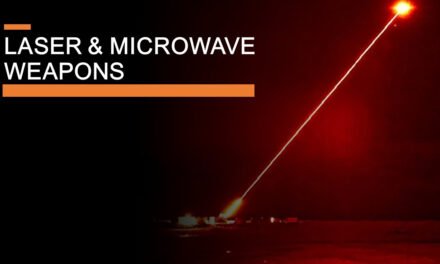Emerging trends in satellite constellations, driven by systems like Starlink, OneWeb, and other initiatives, are reshaping the satellite industry by emphasizing global connectivity, scalability, and innovation. Here’s an overview of the key trends:
1. Mega-Constellations for Global Connectivity
- Massive Deployment:
- Mega-constellations consist of hundreds to tens of thousands of small satellites working together to provide global coverage.
- Example: SpaceX’s Starlink plans to deploy over 40,000 satellites, and OneWeb aims for around 6,000 satellites.
- Low Earth Orbit (LEO):
- Most constellations operate in LEO (500–2,000 km altitude), reducing latency compared to geostationary satellites.
2. High-Speed, Low-Latency Internet
- Objective:
- Deliver high-speed broadband to underserved or remote areas where traditional infrastructure is unavailable.
- Technologies:
- Advanced phased-array antennas and beamforming for reliable connectivity.
- Ka-band and Ku-band frequencies for high data throughput.
- Applications:
- Internet access for rural areas, disaster zones, ships, aircraft, and IoT networks.
3. Miniaturization and Cost Reduction
- Smaller Satellites:
- Advances in miniaturized electronics and components allow for compact designs with enhanced capabilities.
- Example: Satellites weighing under 200 kg can perform functions once reserved for larger systems.
- Mass Production:
- Satellite manufacturers like SpaceX and OneWeb are leveraging assembly-line production to reduce costs and increase launch frequency.
4. Reusable Launch Vehicles
- Cost-Effective Deployment:
- Companies like SpaceX (Falcon 9) and Rocket Lab (Electron) use reusable rockets to lower launch costs significantly.
- Frequent Launches:
- Rapid deployment schedules enable constellations to expand quickly, as seen with Starlink’s frequent launches.
5. Inter-Satellite Communication (ISL)
- Laser Links:
- Satellites communicate directly with each other via laser-based inter-satellite links, reducing reliance on ground stations.
- Benefits:
- Faster data transmission.
- Improved global coverage, even over oceans and remote regions.
- Example: Starlink’s next-generation satellites feature ISLs.
6. Multi-Orbit Strategies
- Diverse Orbits:
- Operators are exploring multi-orbit configurations, combining satellites in LEO, Medium Earth Orbit (MEO), and Geostationary Orbit (GEO) for complementary coverage.
- Example: SES’s O3b mPOWER integrates MEO satellites with GEO assets for high-capacity services.
- Advantages:
- Enhanced coverage and flexibility.
- Reduced latency for specific applications.
7. Sustainable Space Operations
- Space Debris Management:
- Rising concerns about space debris have led operators to implement active deorbiting mechanisms, such as drag sails and propulsion systems.
- Collaboration with international organizations to develop orbital debris mitigation guidelines.
- Long-Term Sustainability:
- Efforts include designing satellites for shorter lifespans, controlled reentry, and collision avoidance technologies.
8. Integration with 5G and IoT Networks
- Seamless Connectivity:
- Satellite constellations are increasingly integrated with terrestrial 5G networks, enabling seamless handovers between satellite and ground-based systems.
- IoT Applications:
- Tracking assets, monitoring environmental conditions, and supporting smart agriculture.
- Example: Amazon’s Project Kuiper plans to support IoT devices alongside broadband services.
9. AI and Automation
- Autonomous Operations:
- Satellites equipped with AI can perform autonomous navigation, collision avoidance, and resource optimization.
- Data Management:
- AI-driven analytics process vast amounts of data for real-time insights and decision-making.
10. Regional and National Constellations
- Localized Efforts:
- Countries and regions are launching their constellations to ensure data sovereignty and strategic independence.
- Examples:
- China’s Guowang constellation for national broadband.
- India’s Bharti-backed OneWeb initiative for regional connectivity.
- Collaborative Models:
- Partnerships between governments and private companies to accelerate deployment.
11. Expansion into Commercial and Defense Markets
- Dual-Use Systems:
- Constellations increasingly serve both commercial and defense purposes, including surveillance, secure communications, and disaster response.
- Example: Starlink has been used for military communication in conflict zones.
- Customizable Solutions:
- Offering tailored services for industries like aviation, maritime, and energy.
12. Regulatory and Spectrum Challenges
- Spectrum Allocation:
- The surge in satellite constellations has intensified competition for radio frequency spectrum.
- Regulators like the ITU and FCC are working to manage frequency allocation and mitigate interference.
- Orbital Congestion:
- Efforts to define orbital “traffic rules” and ensure safe satellite spacing are underway.
13. Constellation Upgrades
- Next-Generation Satellites:
- Operators are developing satellites with improved payloads, enhanced communication systems, and greater power efficiency.
- Example: Starlink’s Gen2 satellites include larger capacities and higher throughput.
- On-Orbit Servicing:
- Emerging technologies for satellite maintenance, upgrades, and refueling in orbit.
14. Democratization of Space
- Lower Barriers to Entry:
- Reduced costs and shared launch opportunities allow startups, universities, and smaller nations to deploy their constellations.
- Open Access:
- Some constellations aim to provide free or affordable internet to underserved communities worldwide.
15. Future Mega-Constellation Plans
- Planned Initiatives:
- Amazon’s Project Kuiper: Aiming for 3,236 satellites.
- China’s Starnet: Proposed constellation of tens of thousands of satellites.
- Telesat’s Lightspeed: Offering high-capacity global broadband services.
- Competitive Landscape:
- Increasing competition among operators is driving innovation and cost reductions.
Conclusion
Satellite constellations are transforming global communication, bridging the digital divide, and enabling new applications across industries. Trends like inter-satellite communication, sustainable operations, and integration with terrestrial networks highlight the innovative and collaborative direction of the industry. These advancements will continue to make space-based connectivity more accessible, reliable, and impactful for a connected world.
Hashtags
#SatelliteConstellations #NextGenSatellites #ConstellationTechnology #ModernSatelliteNetworks #GlobalSatelliteTech #BroadbandAndConnectivity #GlobalConnectivity #BroadbandSatellites #InternetFromSpace #SatelliteInternetTech #SeamlessGlobalNetwork #TechnologicalAdvancements #AdvancedSatelliteConstellations #NextGenSpaceTech #SatelliteInnovation #SmartSatNetworks #AdvancedSpaceNetworking













